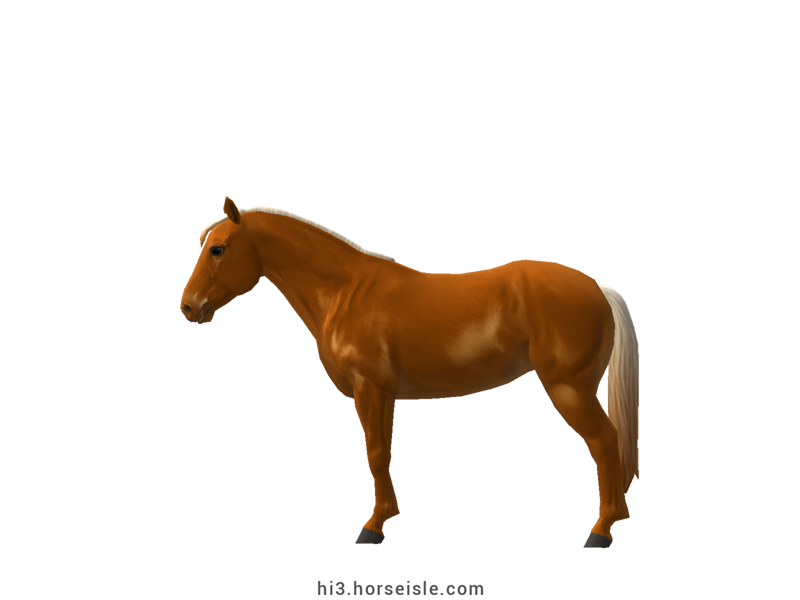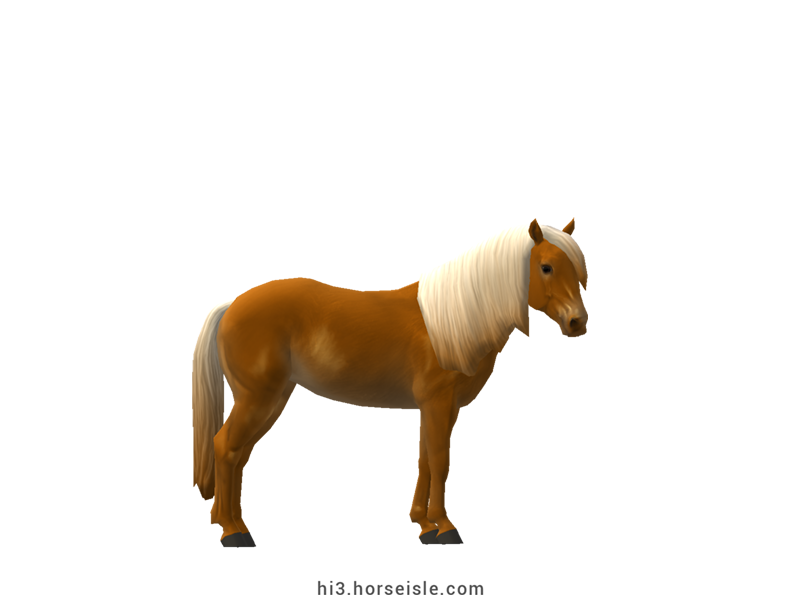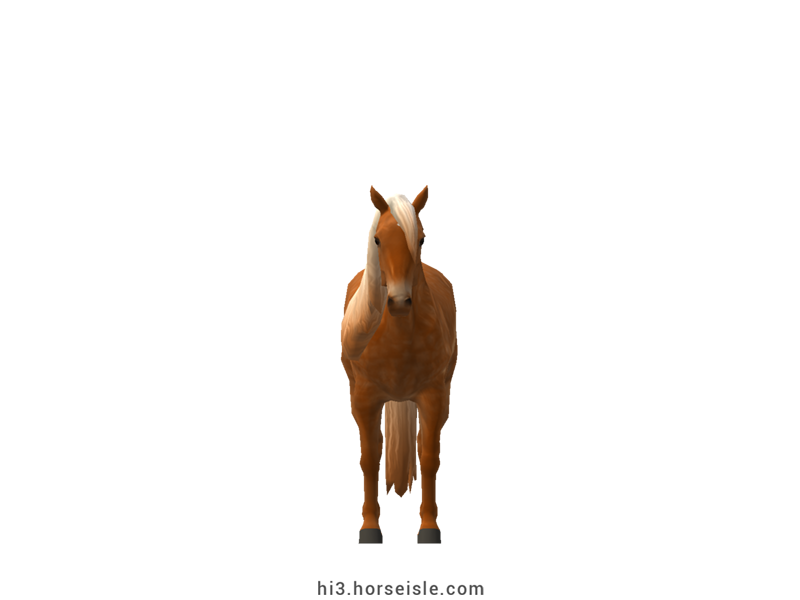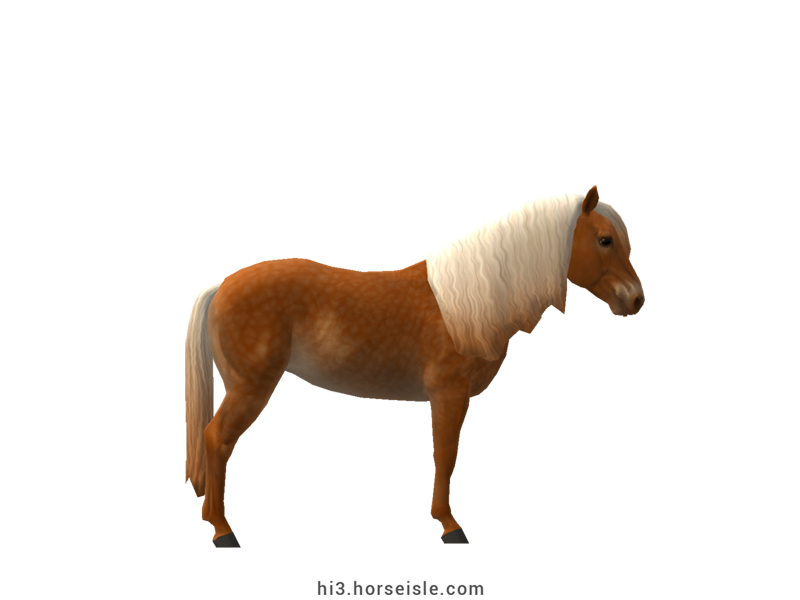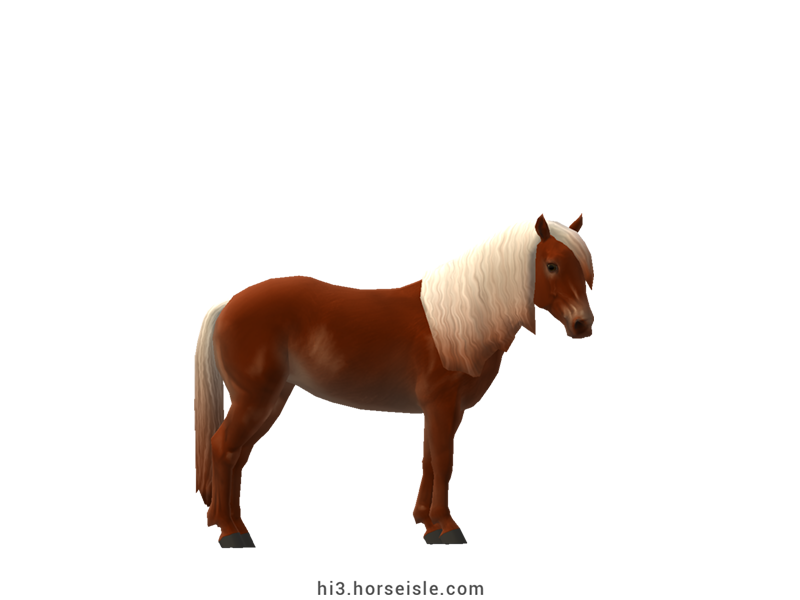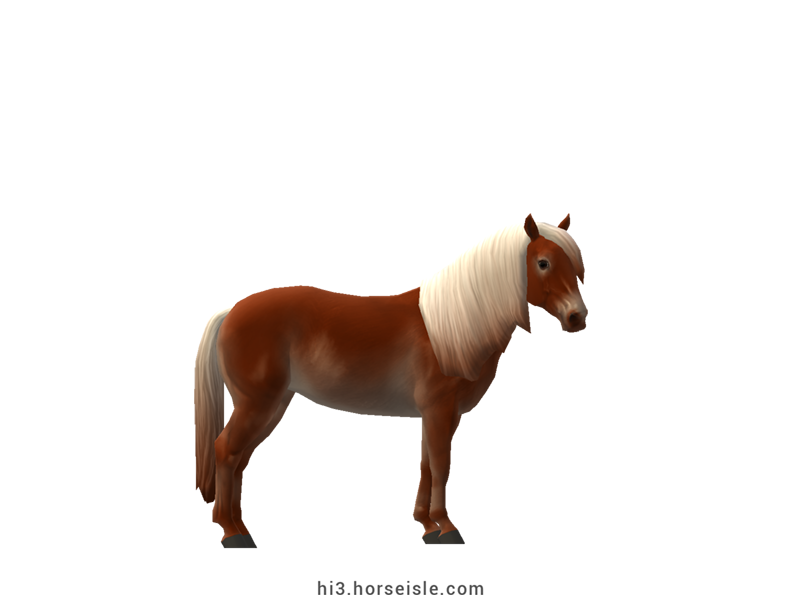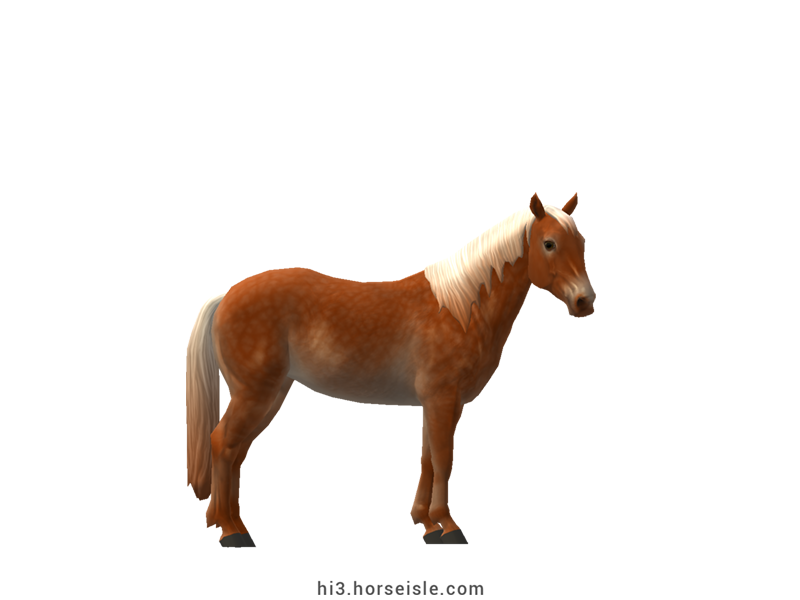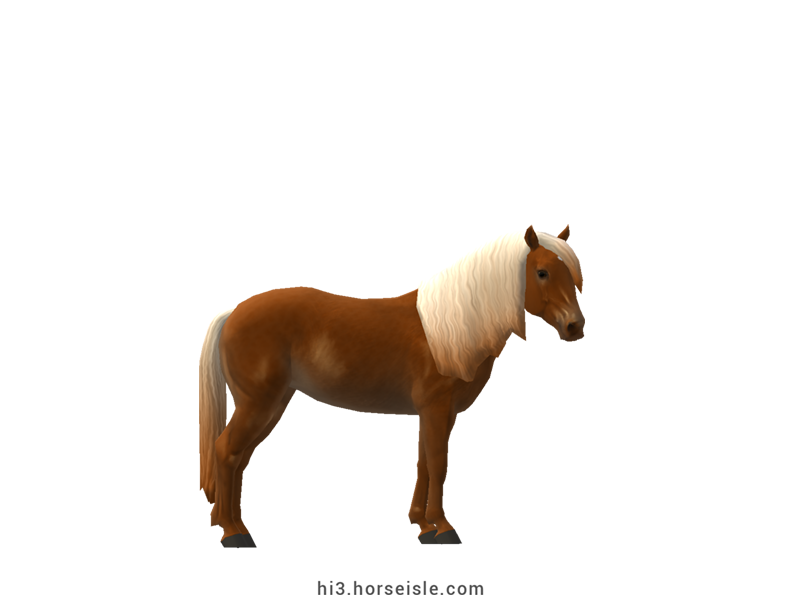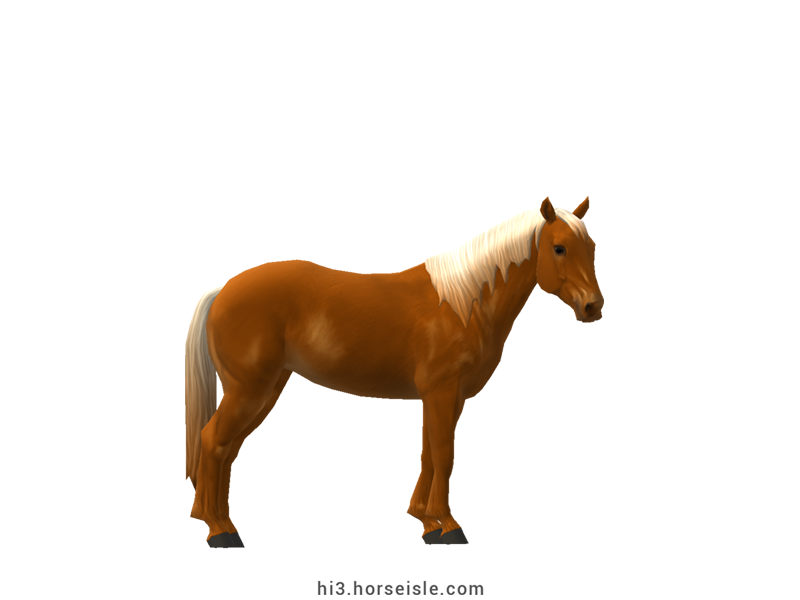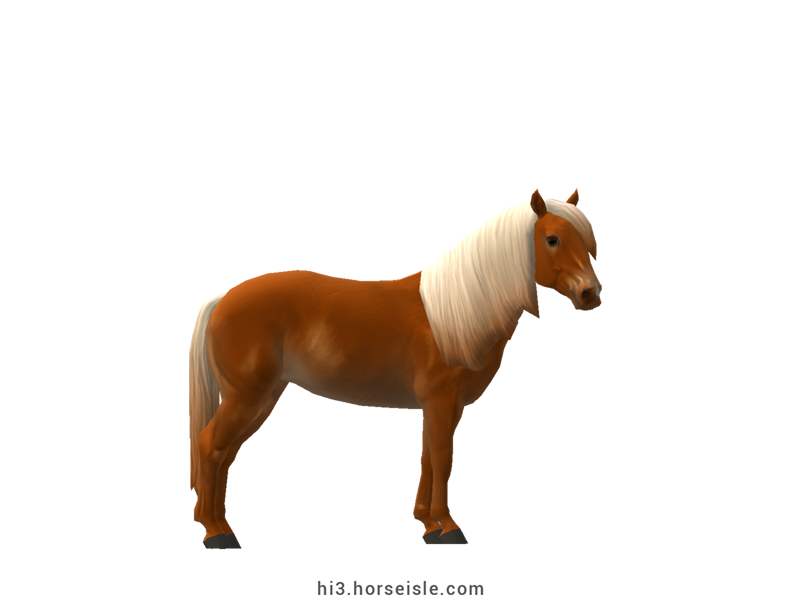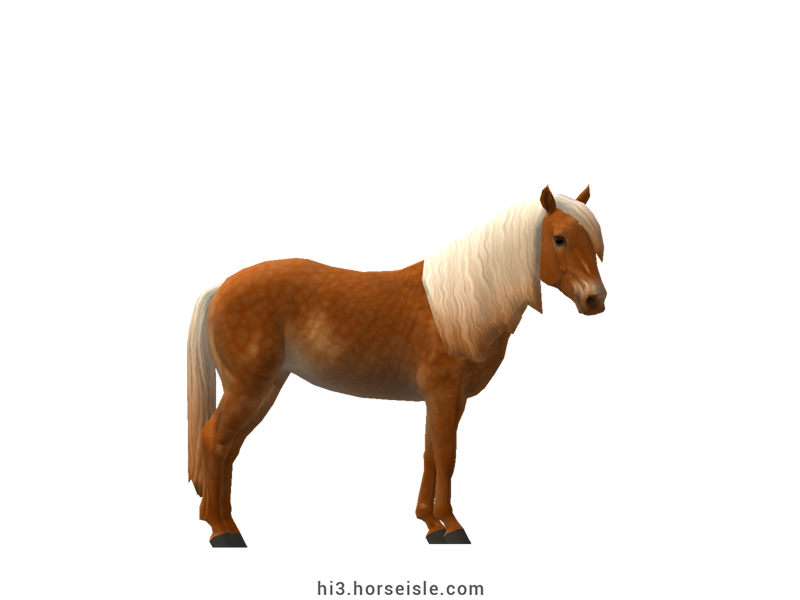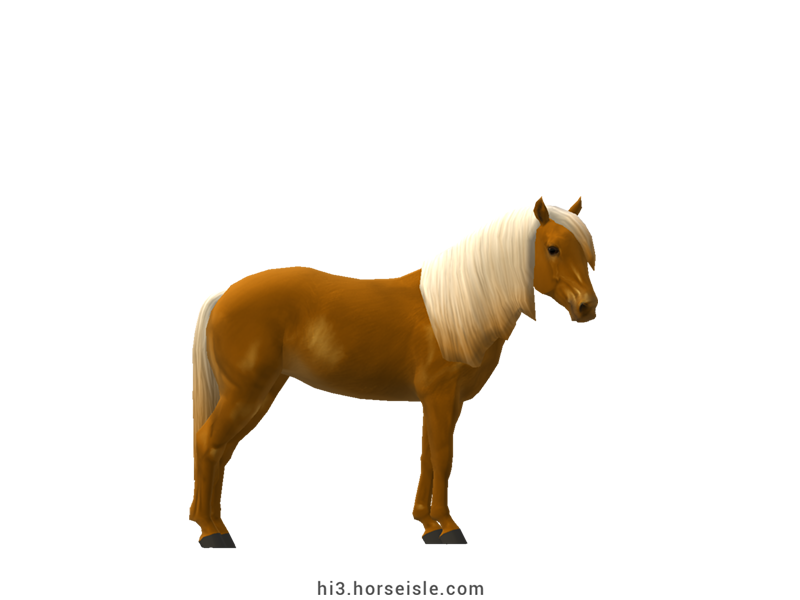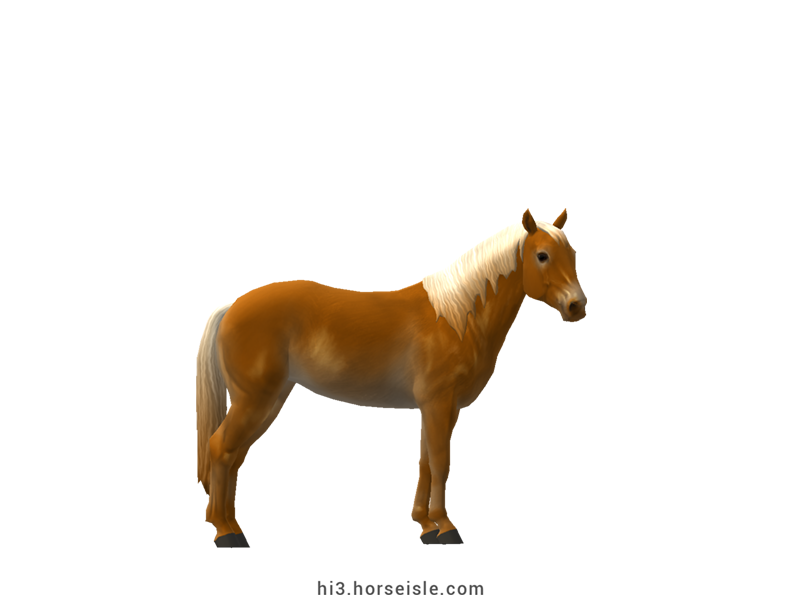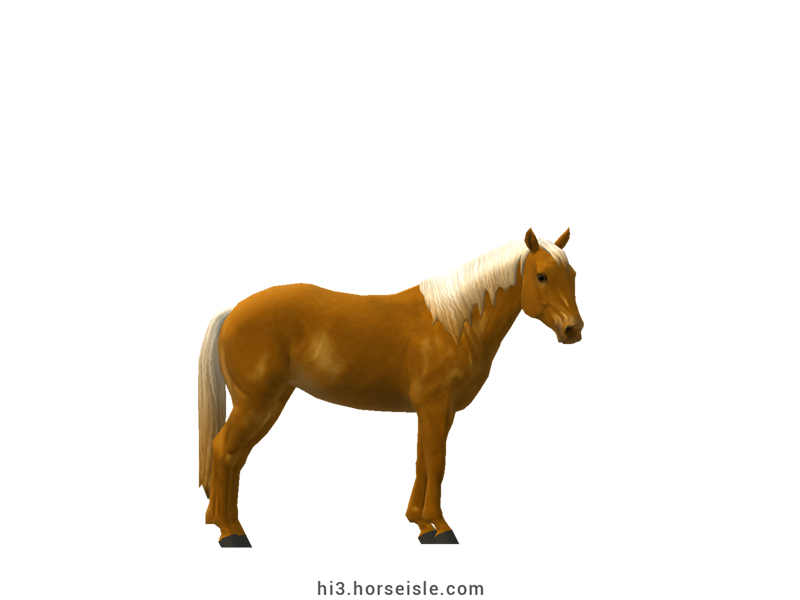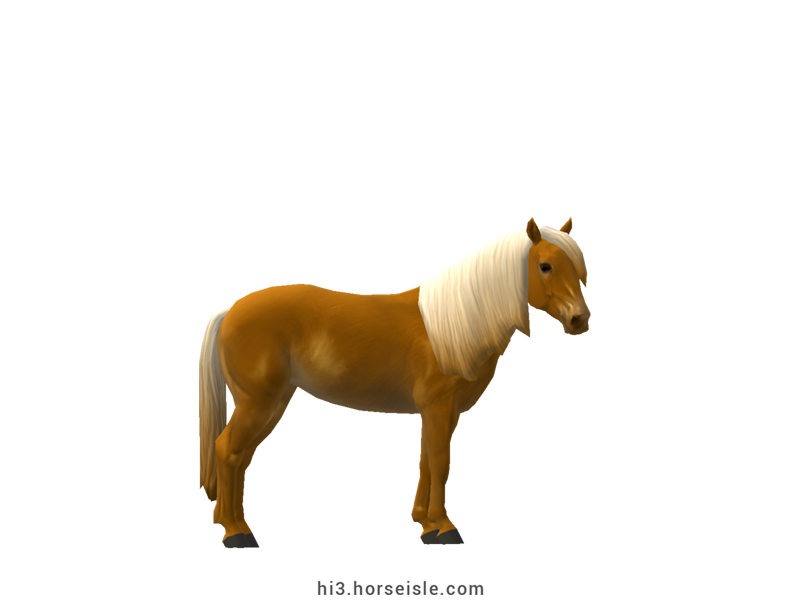Our Massive Real World Equine Reference!
[ INDEX ] Equine Type: Horse Breed: Haflinger [ PREV ] [ NEXT ]
249 Folie:
Back in the early 19th century, herds of small, chestnut horses were a common view in Tyrol. They weren't Haflinger horses, though, and it was only in 1874 that the breed was officially created. Specifically, during that year, a cross between a native Tyrolean mare and the Arabian stallion 133 El' Bedavi XXII resulted in a golden foal named 249 Folie.
249 Folie was the first registered Haflinger horse and served as the foundation sire of the Haflinger breed. As such, all modern purebred Haflingers trace back to Folie through seven different bloodlines, all of which still exist today.
The Haflinger during the 20th century:
Originally, Haflinger horses were used to carry riders and supplies between the villages in the Tyrolean Mountains, and to work the steep fields. Their small yet strong and agile body, together with their stamina, made them ideal for these tasks.
This form of usage declined when motorization took place after World War II. However, instead of giving up on their now-unemployed horses, the villagers started to use their Haflingers for pleasure riding, because the fact that Halflingers are adapted to living at moderate altitudes made them ideal for mountainous terrains.
The Haflinger today:
Over the years, Haflinger horses were brought to additional countries around the world, and thanks to their ability to serve as an all-purpose horse, became a popular breed.
Today, Haflingers are used for various types of work, including draft work, driving, western riding, endurance riding, and even jumping and dressage. These small horses can do almost anything, and their calm and willing temperament also makes them excellent for therapeutic riding.
The Austrian Haflinger and the Avelignese:
While many know that there is a Haflinger breed, not many know that there are actually two Haflinger types: an Austrian one, and an Italian one; all because one comune in northern Italy changed hands from Austria to Italy.
The Haflinger is named after the comune of Hafling, known in Italy as Avelengo. Back in the 19th century, when the Haflinger was created, Avelengo was still an Austrian comune called Hafling. In 1918, the comune became a part of Italy and was renamed Avelengo. Its Haflinger horse was renamed Avelignese, to differentiate it from the Haflinger that was still bred in Austria.
Avelingese Haflingers were marked with HI, while Austrian Haflingers were marked with H. In addition, they were bred to be heavier and more fit for light draft work, while their Austrian cousins were bred to remain light and fit for riding. This resulted in two subtypes of the Haflinger breed: the Austrian, known as Austrian Haflinger, and the Italian, known as Avelingese.
Both the Avelingese and the Austrian Haflinger are found in Horse Isle (see 'Avelingese' and 'Austrian Haflinger' for more info.)
Conformation:
Haflingers have a light head with a straight profile, large eyes, and large nostrils. The neck is of medium length and slightly arched, tapering toward the head. The withers are prominent and connect to a back of a medium length. The croup is slightly sloping, and the chest is large and prominent.
The mane and tail are sometimes wavy and can grow extremely long. The legs are either clean from feathering or have light-to-medium feathering along the cannons and behind the fetlocks.
Performance metrics:
The following are the: range, average, (SD), and MOE of performance metrics of ordered Haflingers in Horse Isle (not bred ones). In rare cases,
Speed: 14.3-16.0, 15.2 (0.4), 0.07.
Sprint: 45-61, 54 (4), 0.74.
Accel: 0.88-1.11, 1.00 (0.05), 0.01.
Decel: 0.89-1.04, 0.96 (0.03), 0.01.
Jump: 5.07-5.33, 5.20 (0.06), 0.01.
Pull: 1.82-2.50, 2.11 (0.16), 0.03.
Turning: 48.78-64.61, 56.45 (3.02), 0.59.
Reverse: 2.7-3.2, 2.9 (0.1), 0.02.
Stamina: 45.80-51.86, 48.67 (1.24), 0.24.
Reaction: 0.62-0.74, 0.69 (0.03), 0.00.
An iconic coat:
The Haflinger breed is one of the few horse breeds that come in only one specific coat color. For the Haflinger, this coat color is flaxen chestnut, and the exact shade of chestnut can vary from light to dark.
The cream gene is not found in this breed, which means that even horses who appear to have a palomino coat are actually bright-, or golden-, chestnuts.
Coats & Height:
Coat: always flaxen chestnut. The coat is always solid, and its shade can vary from liver to bright.
Additionals: flaxen, mealy.
* no brindle.
No sooty? the breed standard for Haflingers calls for a pure coat that lacks excessive darkening, especially in the mane and tail. Strong sooty patterns, like the ones that exist in Horse Isle, break this standard, which is why Haflingers in Horse Isle don't come in sooty.
Markings: markings are kept to a minimum, with no more than a star or snip allowed. Horses with too prominent markings are banned from registration.
Height: 13.1hh to 15.1hh.
[ INDEX ] [ PREV ] [ NEXT ]

